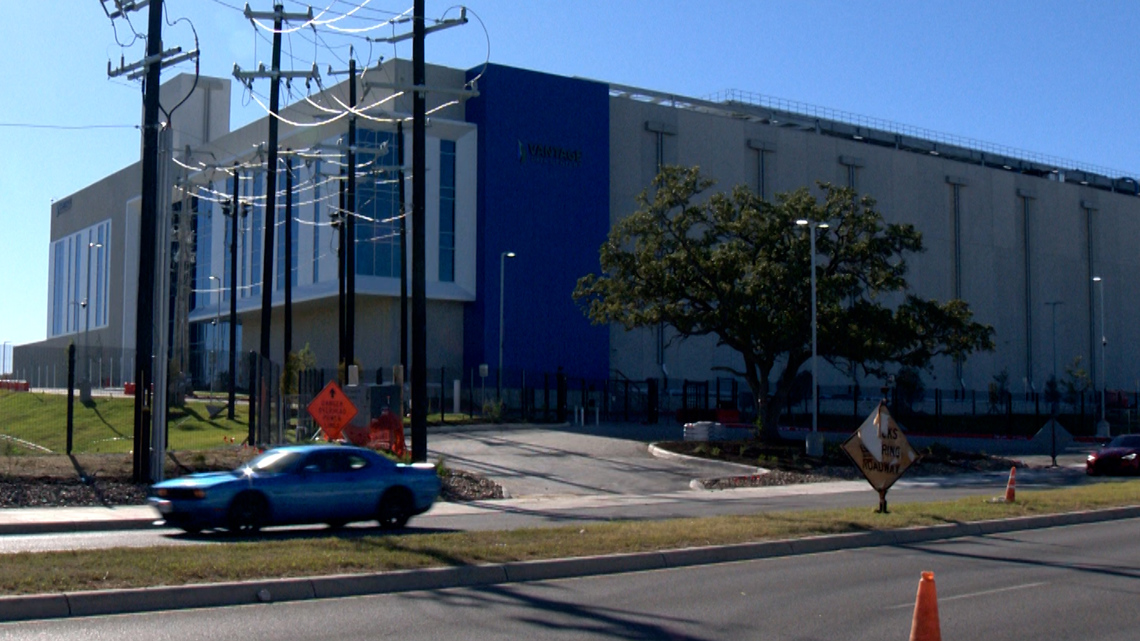
The push for smarter growth comes as Texas data centers consume millions of gallons of water and megawatts of electricity every day.
SAN ANTONIO — San Antonio’s data center boom is transforming the city’s skyline and economy — but one city leader says it’s time to understand what that growth means for the resources that keep the city running.
District 6 Councilman Ric Galvan, who represents the city’s far West Side — home to the largest cluster of data centers in San Antonio — has filed a Council Consideration Request calling for a policy discussion on the industry’s long-term impact on the electric grid, water supply and neighborhoods.
Galvan said data centers are essential to everyday life but their expansion has far outpaced public policy. He’s asking City Council to explore how San Antonio can plan responsibly for an industry that shows no signs of slowing down.
“There’s not really been an effort here in San Antonio to understand what these data centers are — not only in the way they operate, but how they can affect our overall economy, our city budget and of course our resources,” Galvan said.
A regional tech corridor
San Antonio and the stretch of land between here and Austin are now considered one of the largest data center markets in Texas. Galvan said he welcomes the economic growth but wants the city to “take a look under the hood” to understand its ripple effects.
He’s spoken with legal representatives for several data center companies and said background discussions are already happening, but the topic deserves a broader public forum.
“How do we handle this growth? It’s an economic driver — but also a heavily resource-dependent industry,” Galvan said. “How can we make sure our community benefits and isn’t harmed in the process?”
High demand for power and water
A study by the Houston Advanced Research Center and the University of Houston Energy found that the average mid-sized data center uses about 300,000 gallons of water a day — roughly the same as 1,000 homes.
Across Texas, total water use by data centers is projected to increase ninefold by 2030, accounting for nearly 7 percent of statewide water consumption.
The same study found that Texas is rapidly becoming a national hub for data center development, with Dallas–Fort Worth ranked the second-hottest market in the United States.
As of April 2025, Texas hosts more than 400 data center facilities, concentrated in five major regions:
- Dallas–Fort Worth: 196
- West Texas: 59
- San Antonio: 56
- Austin: 50
- Houston: 43
The study found, collectively, these data centers require an estimated 8,152 megawatts of electricity. With about 90 more facilities under construction, that demand is expected to continue climbing in the years ahead.
“We see it in cities across the country, especially in southern states, seeing significant impacts in terms of energy demand and water resources,” Galvan said.
Policy and partnerships
Galvan’s proposal calls for a comprehensive review of zoning, permitting and development codes, with potential amendments to the city’s Unified Development Code to address noise, impervious cover and sustainability standards.
His office is working with ERCOT and major utility providers to collect statewide data on energy and water usage — information he hopes will guide future planning.
“Given the fact that I represent a community that has the most amount of data centers in the entire city, it’s incumbent upon us to take a look under the hood a little bit and understand what’s going on,” Galvan said.
Residents in District 6 first raised concerns to Galvan about the rapid construction and asked how the facilities connect to local jobs and the broader economy. He said that curiosity — paired with concern about rising utility costs — helped prompt his Council Consideration Request.
“People are worried about the resources. They know data centers are important. They just want to understand a bit more about them,” he said. “I think City Council deserves that conversation too.”
An industry of major players
Microsoft, CloudHQ, Vantage Data Centers, QTS and CyrusOne are among the largest investors in Bexar County’s growing data center market.
The Vantage TX12 facility, part of its West Side campus, is a privately funded project slated for completion in 2027. It will span roughly 432,800 square feet over two floors and provide up to 96 megawatts of critical IT capacity, according to filings with the Texas Department of Licensing and Regulation.
Outside Bexar County, Rowan Digital Infrastructure recently broke ground on its Cinco Project in Medina County, a privately funded, $900 million hyperscale campus expected to serve major clients such as Meta, Microsoft and Oracle.
Martin Romo, senior director of economic development and external affairs for Rowan Digital Infrastructure, said the company chose Medina County because of its “strategic location, reliable power, and community that truly values partnership.”
“Sustainability is at the heart of how we build,” Romo said. “The Cinco Project will feature closed-loop cooling systems, renewable energy sources, and water-positive initiatives designed to protect the Edwards Aquifer.”
Romo said the investment has already created hundreds of jobs and will help grow the local economy for decades to come.
What’s next
If approved, Galvan’s proposal will go before the City Council Governance Committee, chaired by the mayor, for further discussion.
He emphasized that his goal isn’t to slow the momentum of San Antonio’s tech growth, but to ensure it’s sustainable.
“This is just the start of the conversation,” Galvan said. “Whether it’s heavy regulation, no regulation, or something in between — we need to understand how this growth affects our urban design, our energy use and our water supply.”
At a glance: Data center growth in Texas
- 400+ data centers statewide
- 56 located in San Antonio
- 8,152 MW of power required statewide
- 300,000 gallons of water a day used by a single mid-sized facility
- 7% of Texas’ total water supply projected for data centers by 2030
- 90 more facilities currently under construction
